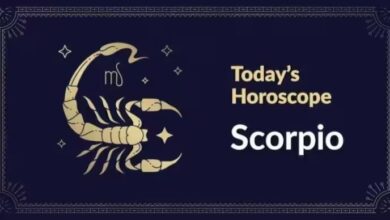In 2023, when is the winter solstice? Learn about the shortest day of the year, including the date and Indian timings
Greetings, stargazers! With the winter solstice quickly coming, sky fans may look forward to an exciting celestial event as the northern hemisphere welcomes winter. A remarkable alignment—the Moon and Jupiter being so near to one another—will be visible in the sky on the forthcoming winter solstice, attracting spectators. The winter solstice officially brings in a new season in the northern hemisphere and heralds the coming of the summer solstice in the southern hemisphere. This seeming contradiction may be explained by the Earth’s axial tilt. Knowing about this astronomical occurrence aids in our comprehension of the Sun’s varying brightness, the seasons’ cyclical rhythm, and the ways in which Earth’s orbital mechanics impact life as we know it. To find out more about this amazing phenomenon, scroll down.

What is the solstice of winter?
Because of the Earth’s 23.4-degree tilt, the arc the Sun passes through will rise and fall throughout the course of the year depending on whether the Earth’s pole is toward the Sun or away from it during the day. The winter solstice marks the northern hemisphere minimum or the time when the sun is at its lowest position in the sky. The Northern Hemisphere has much colder temperatures because of the Earth’s North Pole’s present position away from the Sun. Because the South Pole faces the sun, people in the Southern Hemisphere spend their summers “down under.”
Why is it known as the year’s shortest day?
The winter solstice, often referred to as the December solstice, is the point in the sky when the sun’s path is farthest south. The winter solstice, when the sun achieves its shortest course across the sky, is the day of the year with the least quantity of sunshine and, therefore, the longest night.
A NASA webpage states that the days become shorter and shorter until the winter solstice, which occurs every year on the evening of December 21 or 22, signaling the start of winter in the northern hemisphere. From that point on, the days become steadily longer until the longest day of the year, the summer solstice, which is also referred to as the June solstice.
What is meant by “solstice”?
The name “solstice,” which refers to the apparent stop in the sun’s path before it changes direction, comes from the Latin word “solstitium,” which means “the sun stands still.” The sun looks to be at its most southerly position against the backdrop of stars on the winter solstice.
Winter Solstice 2023: When is it?
This year, the winter solstice occurs on December 21 or 22. On December 21, 2023, at 10:27 PM (EST), we will celebrate the winter solstice. India will witness the winter solstice on December 22 at 8:57 AM. The Northern Hemisphere will experience the shortest day of the year during the day, with around 7 hours and 14 minutes of daylight. The axis of Earth that is farthest from the sun will then be named on December 22. This shows that the winter solstice’s day is 8 hours, 49 minutes shorter than the summer solstice’s.
The winter solstice of 2023: how to watch?
On the solstice, the brightest planet in the evening sky, Jupiter, will be visible to the right of the waxing gibbous moon. Look well above the southeastern horizon as evening approaches to watch them twinkle together. A good compact telescope or binoculars might help you maximize the nightly dance of Jupiter and the moon if you’re new to skywatching. If you missed it, there will be another opportunity on Friday, December 22, when the moon will have shifted to the left of Jupiter. It’s also the height of the yearly Ursid meteor shower, however, visibility of the shower’s scant five to ten’s-hooting stars each hour will be almost impossible due to the brilliant moon.







